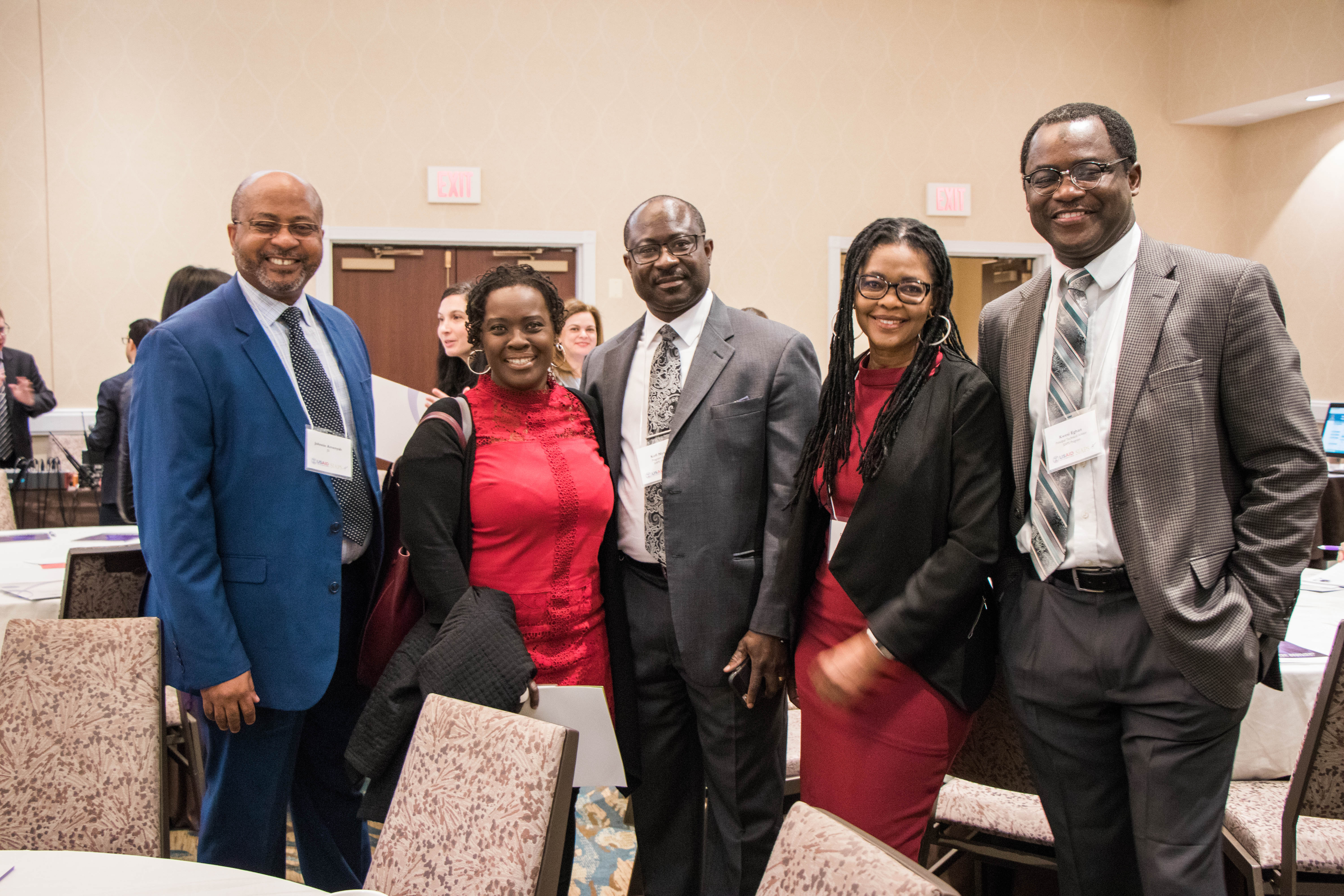
On Thursday, March 1, 2018, MSH held an end-of-program event for the USAID-funded Systems for Improved Access to Pharmaceuticals and Services (SIAPS) program.
More than 100 attendees gathered in Arlington, VA, to discuss progress made and opportunities toward ensuring that quality, life-saving essential medicines and services are available and affordable for the world’s poorest and most vulnerable.
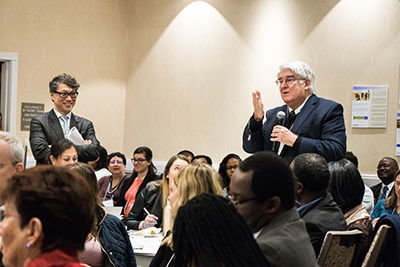
Implemented by Management Sciences for Health (MSH), SIAPS worked in 46 countries, with field offices in 22 countries, from 2011 to 2018. The program aimed to strengthen pharmaceutical systems by focusing on results in five interrelated areas—strengthening governance, building human resource capacity, addressing information needs, improving financing strategy, and ensuring effective service delivery—to ultimately address disease-specific and country needs.
Kelly Saldana, Director of the Office of Health Systems at USAID, opened the event with remarks on how SIAPS’ work reflected USAID’s overall vision for health systems strengthening. “Pharmaceutical systems are uniquely linked to other programs…TB, malaria, RMNCH. The field of health systems has a lot to learn from the SIAPS project. It really does take a systems-wide approach…how we think about [things like] governance and financing at the delivery level, and how these work together to achieve health system goals. That’s really where we want to go…in the future.”
MSH President and CEO Marian Wentworth spoke next. “We’ve learned that strengthening health systems is the most sustainable way of improving health outcomes on a large scale. Strong health systems….in which people, processes, and structures work well and in harmony…are better able to protect populations from things like pandemics, natural disasters, and civil unrest,” Wentworth said.
Challenges, solutions, and opportunities
A panel discussion explored opportunities and challenges for the future of pharmaceutical systems strengthening and advanced a vision of what it takes to build resilient pharmaceutical systems that promote good health outcomes.
“A major challenge is the increasing incidence of substandard and falsified products,” said Anthony Boni, pharmaceutical management specialist at USAID. “Poor quality medicines drive [antimicrobial] resistance. Governance will have to look at how to reduce wastage and procure the best value for quality products; new models are needed to address prescribing and poor adherence. But governments can’t do everything. We have to look toward the private sector. Things can be done to look at the health system more expansively.”
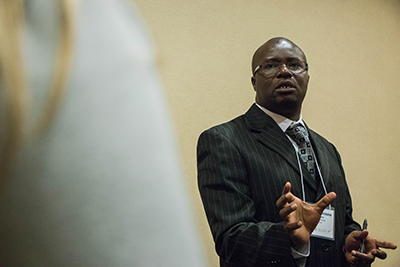
Human resources capacity in the health sector is an ever-pressing problem in low- and middle-income countries. Evans Sagwa, SIAPS country director in Namibia, said, “There’s a limitation in terms of who can handle medicines. When you’re lacking a critical resource in human resource personnel, you have to ask who else can play the role…legally?”
Penelope Smith, drug quality, procurement, and supply chain lead at USAID in the Neglected Tropical Diseases (NTD) Division, spoke of how siloed funding can be difficult to apply to health systems strengthening activities. “[Governments] often respond most to who provides funding, whether that’s provision of trucks or transport. The challenge for things like NTDs is we don’t have that kind of funding. How can we encourage governments to create a unified supply chain if we can’t fund it?”
Lisa Hare, USAID’s chief of the Supply Chain branch, spoke of the importance of information management in systems strengthening and held up Ethiopia as a model of progress. “SIAPS’ Auditable Pharmaceutical Transitions and Services program helped in identifying processes, root problems, and solutions to resolve issues. What’s pushing it is country ownership and political will. They wanted to have an information revolution.”
Zahedul Islam, SIAPS country director in Bangladesh, said that thanks to information management, shortages of key family planning commodities in the country were down to less than one to two percent on average. “We have a supply chain portal through which we can track those commodities live. Anybody can have access to that information. That’s one of the things SIAPS was able to help the government achieve.”
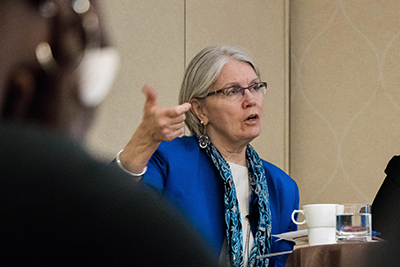
“My work is getting the health service delivery people and pharmaceutical systems people to talk to each other,” said Deborah Armbruster, senior maternal and newborn health advisor for USAID. “Do supply chain [managers] ever talk to the people who are going to use it? For example, there was no oxytocin in Uganda [for midwives]. We went to find out why. The health procurement agency had put out a bid, but nobody responded, so they just didn’t buy it. That happens all too often.”
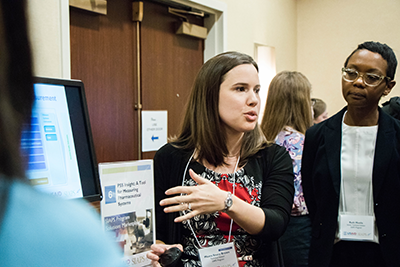
Short presentations explained the approaches, strategies, tools, and actions that SIAPS developed to improve access to and the use of pharmaceutical products and services. These included strengthening governance and procurement to increase the availability of contraceptives and medicines in Bangladesh; working with faith-based organizations to create a pooled procurement mechanism in Cameroon; OSPSANTE, a tool for tracking health commodities in Mali; supporting more effective antibiotic use for cesarean sections in Jordan; PSS Insight, a new tool for measuring pharmaceutical system strengthening; and pharmacist training programs to scale up human resource capacity in Namibia.
SIAPS Impact
SIAPS Program Director Francis Aboagye-Nyame outlined the project’s results over its years in operation and his ideas for the future of pharmaceutical systems strengthening.
“We’ve learned that integration is key. How do we ensure that pharmaceutical systems strengthening is not always riding the coattails of supply chain [work]? It’s important that we pay attention to rational medicine use and pharmacovigilance. We can have good quality [medicines] and make sure they are available, but they need to be used appropriately. Rational medicine use is key to slowing down antimicrobial resistance now and into the future,” he said.
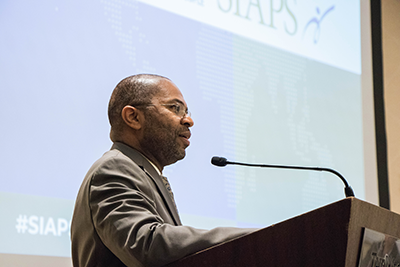
To close the event, Douglas Keene, Vice President for MSH’s Pharmaceuticals and Health Technologies Group, spoke of the MSH vision for the future of pharmaceutical systems strengthening. This includes a number of new initiatives, such as MedSource, a pharmaceuticals group purchasing organization based in Kenya, a software and data management program, and a focus on helping countries adopt health technologies.
“We’re looking to increase impact and sustainability by expanding opportunities for partnerships with non-US Government development agencies, country governments, donors, foundations, and the private sector. Based on our technical expertise and vast experience, we have a vision and strategies to seize opportunities and overcome challenges in a global environment that seems like it changes by the minute,” Keene said.
Click here to see the SIAPS Final Report.

